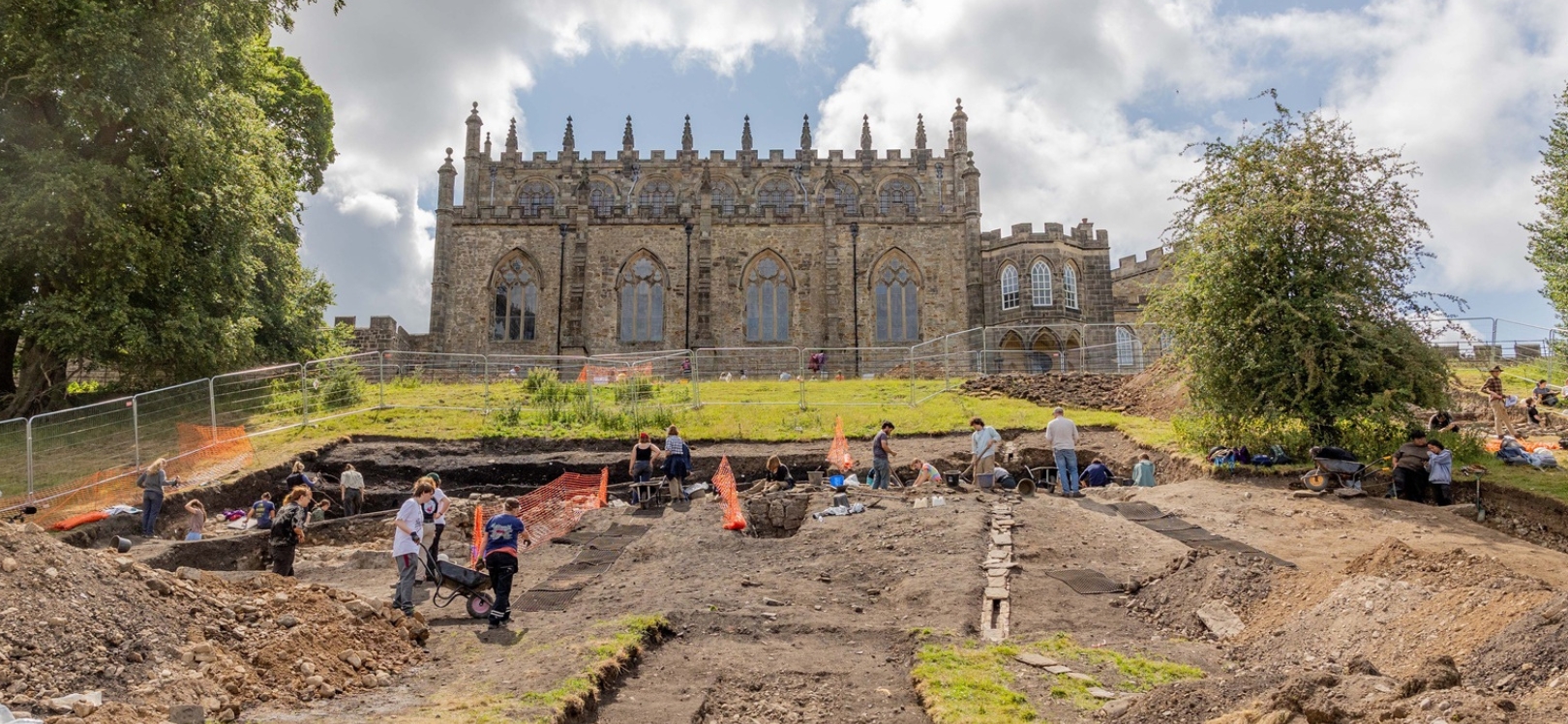Industry News
Eight years of excavations reveal Bishop Auckland’s medieval palace
After almost a decade of digging, and over 1,000 diggers, Durham University’s Department of Archaeology and The Auckland Project are coming to the end of a campaign of archaeological research to uncover the medieval past buried in the historic grounds of Auckland Palace.
Since 2018, volunteers, students and aspiring archaeologists of all ages have taken part in unearthing hidden artefacts and helping to piece together centuries of County Durham’s rich history.
Each year Durham University's Archaeology department conducts excavations at Auckland Palace, providing first-year students with practical fieldwork experience. The excavations, which are part of the department's field training, focus on uncovering and understanding the palace's history and the surrounding area. They have uncovered palace walls, towers and gatehouses built by the medieval Prince Bishops. The most significant discovery was a two-storey chapel built by Bishop Bek around 1300, which was the largest of its kind in Britain, and has been commemorated in the layout of Auckland Palace’s Faith Museum courtyard.
In 2024, excavations led by Durham University, alongside local volunteers and The Auckland Project team, revealed the remains of a 17th-century house built by Parliamentarian Sir Arthur Haselrig, a key figure in the English Civil War - a discovery that featured on BBC Two’s Digging for Britain.
The 2025 dig has returned to investigate an area north of the palace where the team has previously discovered a gold flower decoration, an elephant ivory, gold and silver handled knife, intricate wine glasses, and a very rare jet dice, amongst other artefacts that tell the story of Auckland Palace’s vast wealth, power and influence across the region.
Some of the objects recovered from the excavations are on display in The Auckland Project’s Faith Museum, alongside the Binchester Ring, uncovered at the nearby Roman fort by Durham University in 2014. The silver ring, set with a carved carnelian stone is thought to be one of the earliest Christian artefacts found in Britain.
Professor Chris Gerrard, from Durham University’s Department of Archaeology, described the success of the excavations, explaining: “Auckland Palace will be, as far as we are concerned, one of the best-understood bishop’s palaces in Western Europe, from an archaeological point of view.”
This June the excavations have uncovered remains of the walls that once encircled the Prince Bishop’s residence, including an unknown circuit of walls that still stands to over 3m tall but was completely buried, and a possible tower that overlooked Auckland Palace’s deer park. One of the most interesting discoveries has been a garderobe – a medieval toilet – which is next to the Great Hall, where the bishops and their guests would have feasted.
John Castling, Archaeology Curator at The Auckland Project, said: “The discoveries here range from the magnificent to the ordinary and shed light on the long and complex history of this remarkable site — from medieval bishops and their households to 17th-century global upheaval. All the finds have been made with the help of university students, local volunteers and young people, and deepen our knowledge of this extraordinary place and make history something everyone can experience and be part of.
“Each person who picks up a trowel here contributes not only to our understanding of the site but also helps bring its history to life for future generations.”
As a regeneration charity, The Auckland Project is revitalising Bishop Auckland as a major cultural destination, celebrating the town’s rich history - from the powerful Prince Bishops of Durham to its surprising ties to the Spanish Golden Age. Through heritage, art, and community engagement, the charity is creating opportunities for locals and visitors alike.

